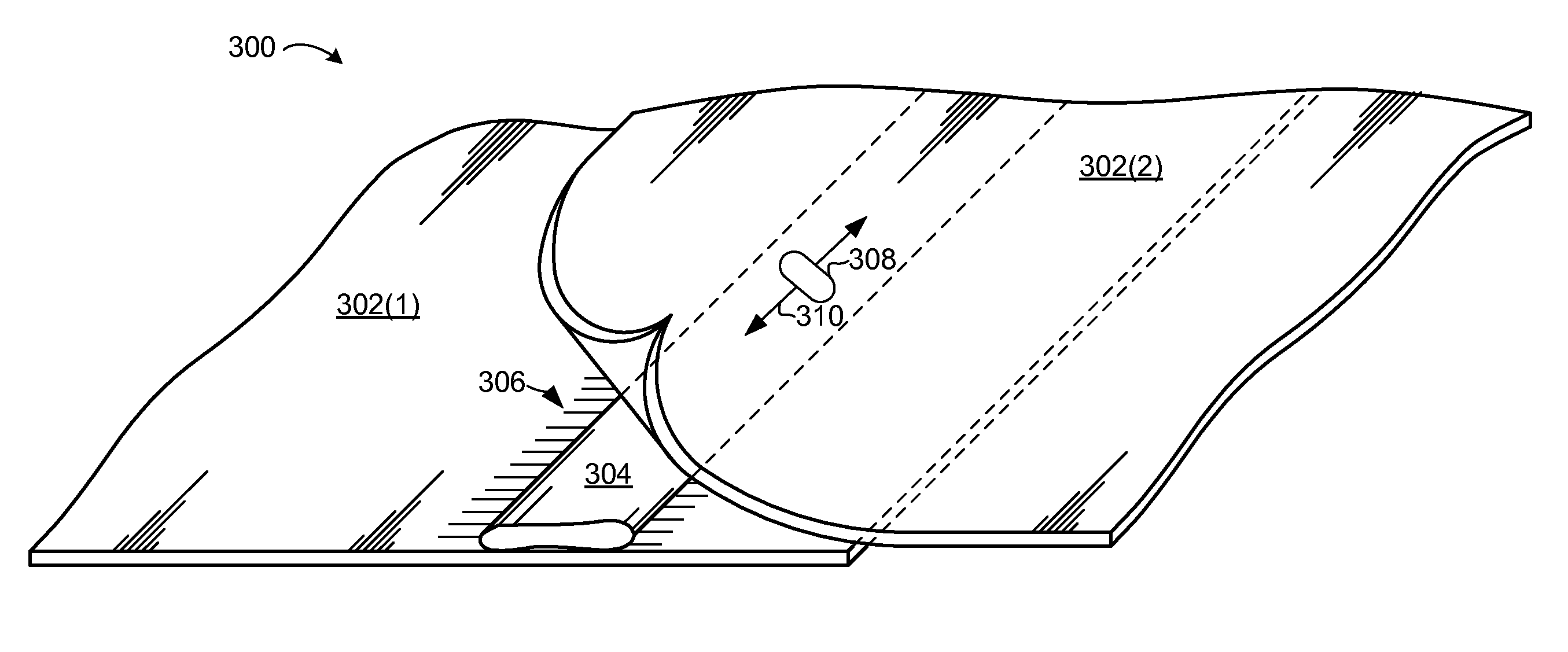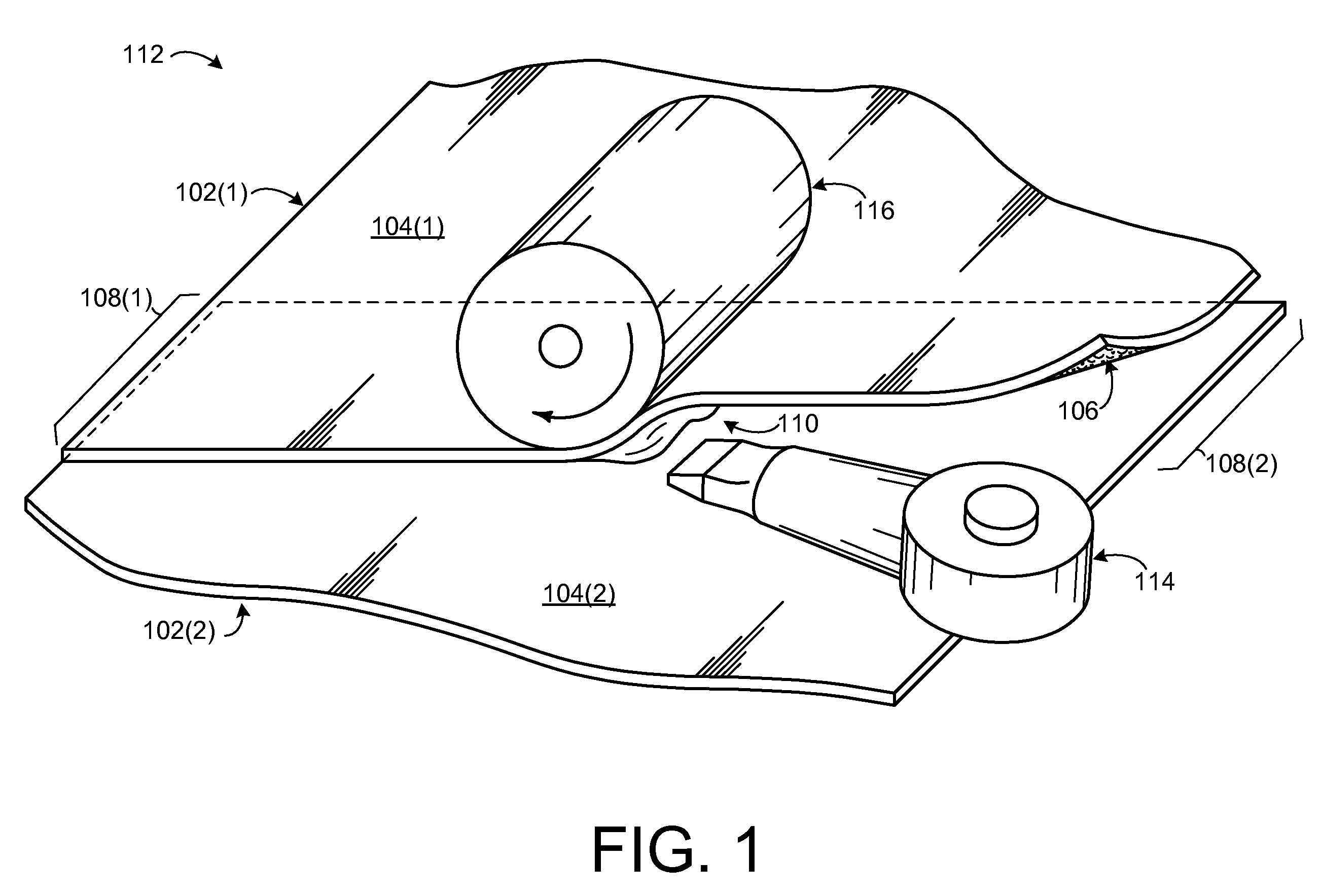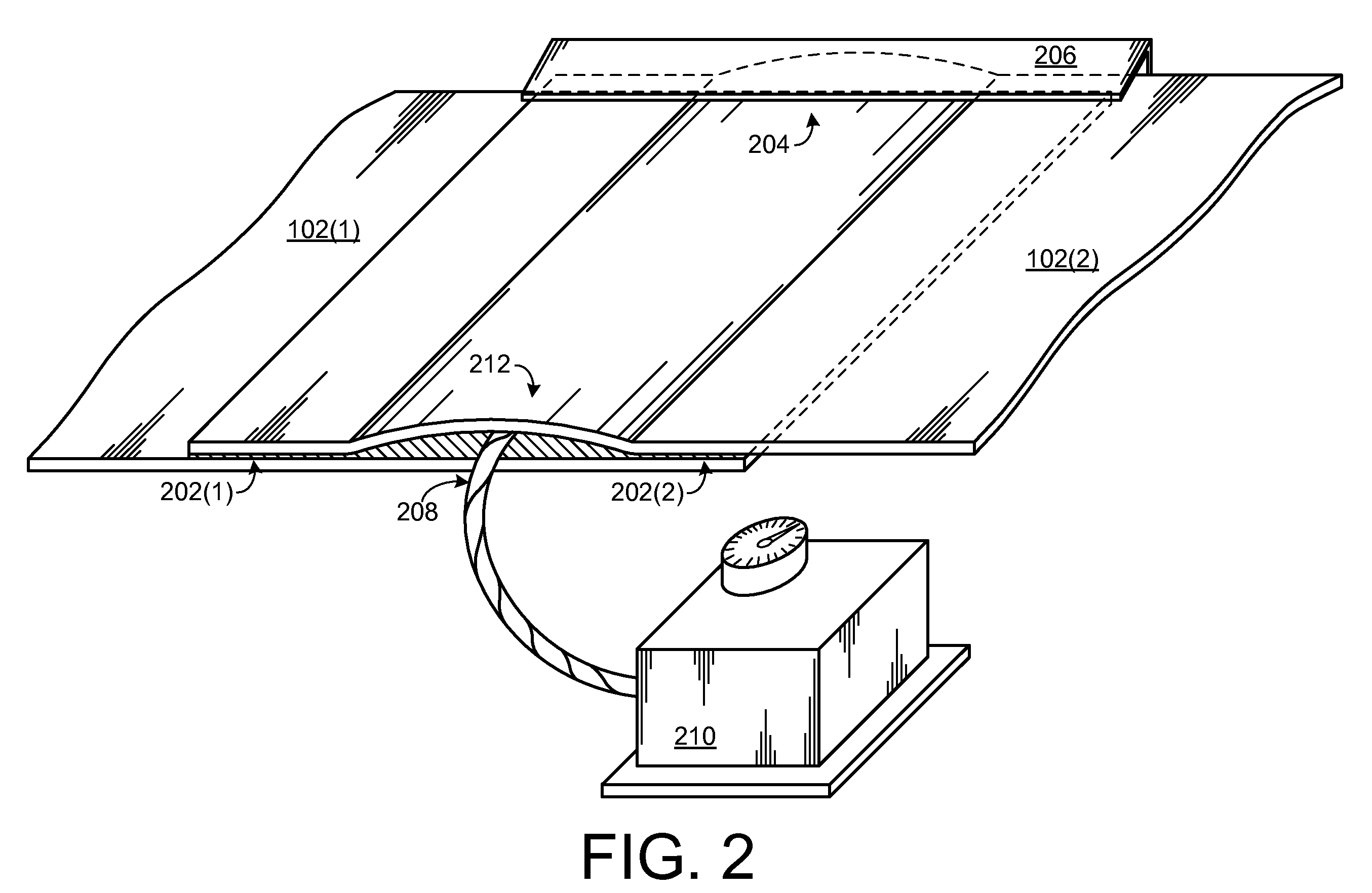Fluid liner fabrication and installation
a technology of fluid liner and fabrication method, which is applied in the direction of check valves, packaging, synthetic resin layered products, etc., can solve the problems of affecting the durability, installation, and cost of current membranes, and the risk of external forces on exposed geomembranes, so as to prevent fluid loss
- Summary
- Abstract
- Description
- Claims
- Application Information
AI Technical Summary
Benefits of technology
Problems solved by technology
Method used
Image
Examples
example application
of Cleats
[0033]In one or more embodiments, stiffening ribs or cleats can be applied to recycled sheets and / or sections of a fluid liner to help ensure that the recycled sheets do not lift in a canal cross section area where the bottom horizontal portion transitions to a sloped side. Such cleats can be made of a recycled rubber formulation that is the same as, or compatible with, the formulation of the recycled sheets, e.g., CLG-3231. Individual cleats can be any suitable size and shape. In some embodiments, individual cleats are from about ¼ inch to ½ inch thick, from about 2 inches to 3 inches wide, and from about 3 feet to 4 feet long. The cleats can be thermally welded, using a suitable welding tool, e.g., the Leister Triac hot air welder mentioned above, to the recycled sheets according to the dimensions of the fluid containment structure in which the recycled sheets are to be installed. In some implementations, cleats can be placed laterally, longitudinally, or obliquely across...
PUM
| Property | Measurement | Unit |
|---|---|---|
| specific gravity | aaaaa | aaaaa |
| widths | aaaaa | aaaaa |
| length | aaaaa | aaaaa |
Abstract
Description
Claims
Application Information
 Login to View More
Login to View More - R&D
- Intellectual Property
- Life Sciences
- Materials
- Tech Scout
- Unparalleled Data Quality
- Higher Quality Content
- 60% Fewer Hallucinations
Browse by: Latest US Patents, China's latest patents, Technical Efficacy Thesaurus, Application Domain, Technology Topic, Popular Technical Reports.
© 2025 PatSnap. All rights reserved.Legal|Privacy policy|Modern Slavery Act Transparency Statement|Sitemap|About US| Contact US: help@patsnap.com



